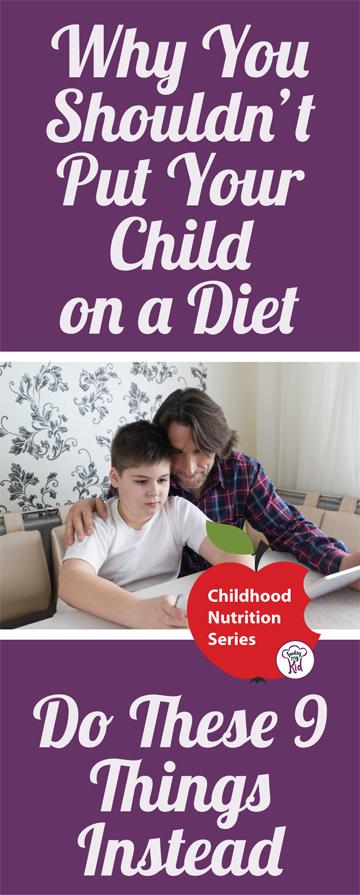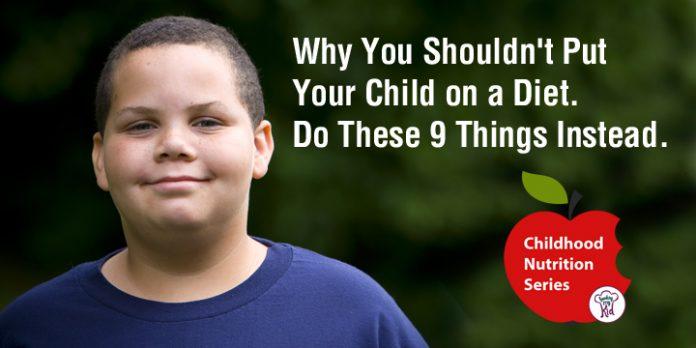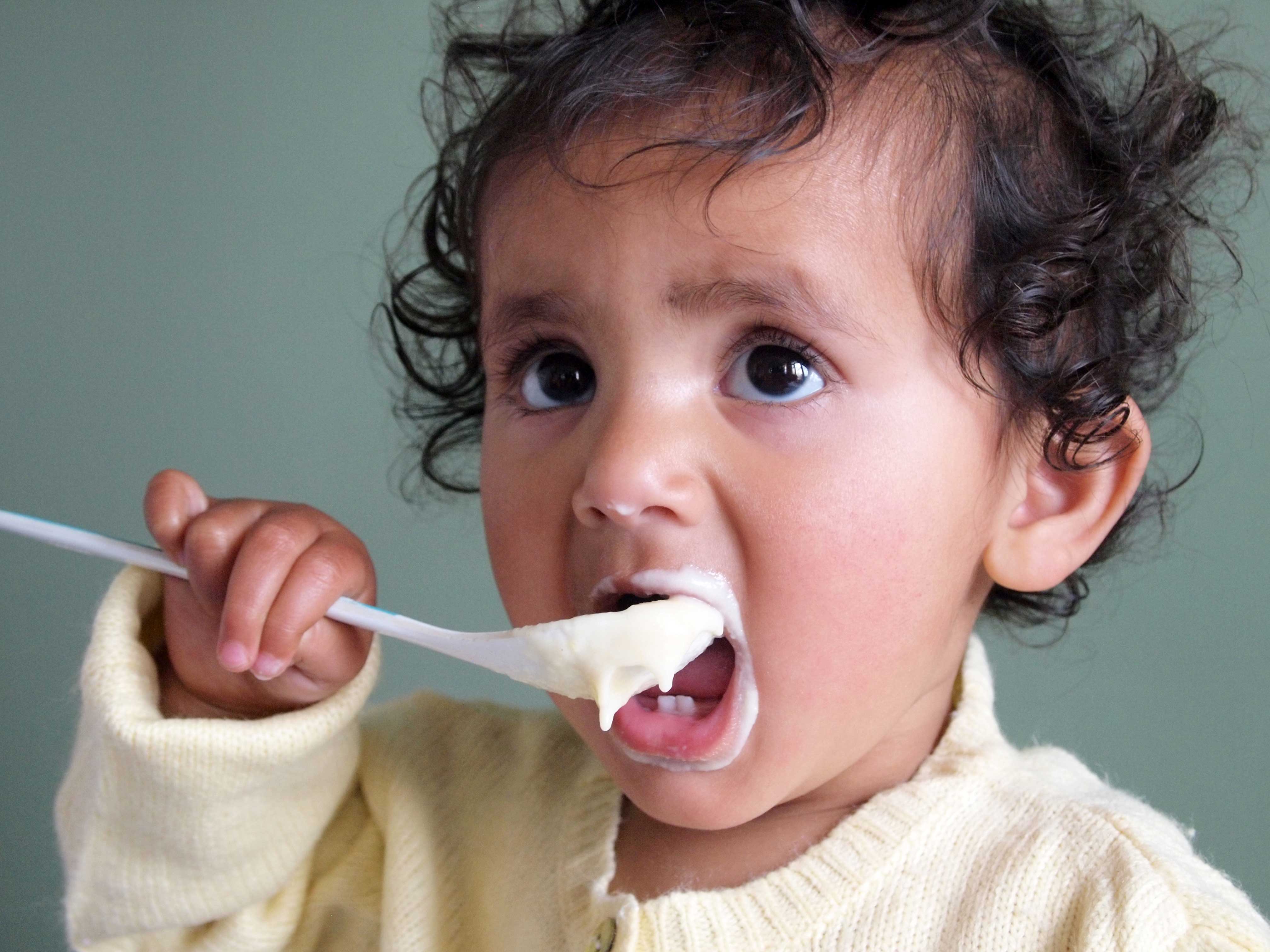 There are countless studies and statistics that show parents are either unaware of their child being overweight or are in denial saying things like “my child will lose the baby fat,” or “he’ll just grow out of it.”
There are countless studies and statistics that show parents are either unaware of their child being overweight or are in denial saying things like “my child will lose the baby fat,” or “he’ll just grow out of it.”
Some parents of overweight children are in disbelief that the extra weight a child has now can stay with him or her for a lifetime.
It’s sometimes hard to see. To you, your child is the perfect size and shape. Everything about your child is perfect. He or she is your pride and joy!
While we encourage parents to love their children no matter their size, we also want to help parents get their kids to a healthy weight. Some of the most important lessons we can teach our children is how to be healthy and how to develop a healthy relationship with food.
In this article, you’ll find out how to create a positive environment where your child will be encouraged to lose weight, without a diet and without shaming. We will walk you through the steps it takes to make a lifestyle change to foster a better relationship between your child and the food he or she eats.
Why You Don’t Want to Put Your Child on a Diet!
Recent studies among kids have shown that putting your child on a restrictive diet can have long-term ramifications such as future eating disorders, potential alcoholism and obesity later in life (3).
So what is a parent to do?
In the article Putting Your Child On A Diet Could Have Unintended Consequences, Pamela Keel points out that diets in young children are extraordinarily harmful, “Women who were put on diets as young girls are more likely to struggle with obesity, alcohol abuse and disordered eating as adults…”
So how do you get your child to lose weight without causing more harm than good?
Start with a lifestyle change and not with a diet.
Why Kid’s Diets Don’t Work
Unfortunately, diets just don’t work.
What you have are staggering instances where fad diets, from not eating bacon because of all the fat (LCHF diet) to eating all of the bacon because it doesn’t have any carbs (Atkins diet), can get in the way of learning to live a healthy lifestyle (3).
Fad diets don’t work. They will not teach your child how to eat right in the long-term. Your child will not learn the importance of moderation or how to make healthy food choices. Once your child is off the diet, he will probably go back to eating as he did- because he wasn’t taught how to eat right. Sadly, the weight your child lost will probably come back.
And as we said, the mental health ramifications of trying to slim down your child can be potentially more harmful than the weight itself. You don’t want to do a quick fix. Your child’s relationship with food cannot be solved in a program; it can only be solved by adjusting your child’s lifestyle.
This is a life-long journey. You are teaching your children how to develop a healthy relationship with food.
A Life-Long Journey
It can be heard to create a healthy, life long-journey without first addressing your concerns with your child about their weight. Check out our article on How to Best Talk to Your Kids About Their Weight!
After the conversation, there are a number of ways to help your child lose weight. You must first change the way you look at food and your child’s relationship with food. Your child will have to re-learn how to eat. In order to create a better, more positive relationship for your child and the food he eats, you need to focus on these nine methods to overcome the hurdles and challenges of trying to live a healthier lifestyle.
1. Reward with Active Play
 Your kid did well, he got a good grade, picked up his room or finished his greens. You want to give him a treat to show him that you’re proud of what he’s done. While an effective motivational tool, this may contribute to your child developing an unhealthy relationship with food.
Your kid did well, he got a good grade, picked up his room or finished his greens. You want to give him a treat to show him that you’re proud of what he’s done. While an effective motivational tool, this may contribute to your child developing an unhealthy relationship with food.
Kids are starting to tie emotional happiness with foods and we do not want children to relate foods to emotions. As adults, a lot of us have learned to eat when we are happy, sad or bored. Two-thirds of adults are overweight or obese. We want to avoid the same fate with our children.
Positive reinforcement should not come in the form of something sugary or sweet, but in the form of things such as taking your child out to a park or on a nice walk. We want to reward kids with active play. We also hope to encourage more parents to spend quality time with kids in place of food.
Taking your kid out to a park will create a lifelong habit of rewards built on active play. Active play will build better self-esteem and burn more calories. If habits make the person, then help your child create active habits he can take with him through adulthood.
2. Snacking
Snacking can be troublesome. In fact, its been shown that if children are snacking (as opposed to not snacking) they are more likely to consume empty calories in a day.
Learn more about the do’s and dont’s of snacking.
A recent study demonstrates that high-calorie snacks are linked to childhood obesity. According to researchers at the University of North Carolina, Candy, ice cream and other snacks account for 27% of the daily caloric intake for children from ages 2 to 18.
So when it comes to snacking, be sure to use snacks as an opportunity to get your child to eat healthier foods and to help meet your child’s nutritional needs. As Ellyn Satter states in her book ‘Your Child’s Weight:’ you are in control of what, when and where your child eats; but your child is in control of how much he eats. Let him learn moderation on his own.
The first step in changing your child’s weight starts by planning out your child’s meals and snacks for the week. If you have chips, pretzels, granola bars and cereal bars as snacks, get rid of them.
For those on the go-days check out: Healthy Snack Ideas for Kids: Snacks on the Go.
If you make healthier snacks more easily avialable for children, then they will more likely eat them, like cutting up carrot sticks. Fill your pantry and refrigerator with healthy options and don’t be fooled by food manufactures’ marketing. Food manufacturers spend a total amount of $10 billion a year to market to children (4). So just because it says “all natural” or “reduced fat” does not mean it’s healthy to eat! In fact, it may mean it’s less healthy.
“If you’re concerned about your health, you should probably avoid products that make health claims. Why? Because a health claim on a food product is a strong indication it’s not really food, and food is what you want to eat,” says Michael Pollan, In Defense of Food: An Eater’s Manifesto.
So when stocking up on foods at home, be sure to check the labels. To regulate portions during snack-time, be sure to start a habit of utilizing pre-selected bowls and dishes. Prep snacks in advance and split them into individual portions so your child can always have an easy to reach snack.
3. Mealtime
Creating a special time for you and your family to eat is one of the most important ways to reverse childhood obesity.
If you want your child to eat more vegetables, make sure you are eating more vegetables as well. Modeling is one of the most important steps in adjusting your child’s lifestyle. Kids learn by example good or bad, so to get your family into the rhythm of eating healthier, you will have to start at the dinner table (5).
Start making vegetables as the main dishes of your meals. Get creative! Check out all of our vegetable recipes to get new ideas to try at home. During dinnertime, serve the foods you want your child to eat more of like green bean casseroles, cauliflower pizza, or homemade baked chicken nuggets.
Research has also shown that having mealtime frequently creates stronger family bonds, more mutual respect and honesty among you and your children. This will also start a healthy relationship between your child and the food he eats (7).
4. Don’t Focus on Counting Calories
“Humans beings do not eat nutrients, they eat food.” – Mary Catherine Bateson
Focus on serving a large variety of foods. Do not get caught up counting calories or focusing too much on nutrition. Make an effort to eat the rainbow and focus more on a plant-based diet. Counting calories is exhausting and takes the joy out of eating. Plus, it probably will not be sustainable.
There are a number of great books that help parents manage their child’s weight-loss in a healthy manner including Red Light, Green Light, Eat Right. In the book, the author Joanna Dolgoff, MD, says “kids can learn that optimal health and weight loss can be achieved and maintained not by restricting food groups or counting calories but by learning how to eat nutritious food — and having fun.”
5. Don’t Limit Second Helpings
Whatever you do, do not be overly controlling or restrictive. Restricting foods will not create healthy habits, but instead may cause your child to overeat. A healthy lifestyle is a balance.
Ellyn Satter, who is a feeding expert and authored the book, Your Child’s Weight: Helping without Harming, states “trying to get your child to eat less backfires. Unless we spoil it, children are good at knowing how much they need to eat. Some days they don’t eat much; other days they eat more. If you try to decide how much your child eats, he will stop knowing how much he needs to eat and eat more than he needs. Even if he tries to please you and eat less, he won’t be able to help himself. He will still sneak food or eat a lot when he gets the chance.”
6. Don’t Forbid Foods
“Outlawing any particular food will only heighten your child’s design for it,” according Dr. Dolgoff. “Your child will rebel, both psychologically and physiologically, by overeating and sneaking food. It’s a recipe for obesity and disordered eating.”
7. Don’t Force Foods
“This tactic will likely cause aversions that can linger into adulthood. Explain why your children should try the healthy food you’ve provided, and have patience that your dialogue — not power plays at the dinner table — will convince them to eat new foods,” according to author Dolgoff, MD.
8. Don’t Be the Food Police
“Too much scrutiny will cause your kids to rebel. Give them enough autonomy and responsibility to learn, by trial and error, the difference between an unhealthy food choice and a healthy one,” according to author Dolgoff, MD.
The goal is to offer healthier foods and not to restrict how many servings of food your child has
9. Cook More Meals At Home
Restaurants and take-out can sabotage your child’s healthy lifestyle goals. By cooking more meals at home, you know how much fat, sugar and salt are going into the dishes. You have control of the quality of food that you are preparing. Restaurants, especially fast food restaurants, can often serve lower quality food and mask this with extra salt, fat and sugar.
Lifestyle Change
In the end, it comes down to a lifestyle change. You have to be willing to adopt new, healthier eating habits, create home-cooked meals and set time aside for mealtime. You need to recognize that this journey can’t be solved by fad-diets or dieting, it can only be solved by adopting these new methods. It’s not about losing weight; it’s about living healthy.
So get started today! Have mealtime be family time and you’ll see the changes.
And of course, always remember to consult with your child’s physician or dietitian before implementing any steps.
Share your experience in the comments below and what worked for your family. We can all learn so much from each other.
Check out our other articles in our Childhood Nutrition Series:
- How to Best Talk to Your Kids About Their Weight!
- Why Food’s Marketed to Kids Causes Weight Gain
- How Juice Went From A Health Food to Junk Food
- How to Improve Academic Performance with Superfoods
- Bliss Point: How Taste is Manufactured

Additional Information and Resources
-
The Atlantic: Study: When Talking to Kids About Obesity, Focus on Foods, Not Body Shapes
-
Harvard Gazette: The Whys of Rising Obesity
-
Huffpost Healthy Living: Putting Your Child On A Diet Could Have Unintended Consequences
-
Institute of Medicine. Food Marketing to Children: Threat or Opportunity? Washington, DC: National Academies Press, 2006.
-
WebMD: Safe Weight Loss for Overweight Kids
-
Your Child’s Weight: Helping without Harming: Birth through Adolescence. By Ellyn Satter. “Chapter 1” Madison, WI: Pg. 10-70. Print.
-
WebMD: Family Dinners Are Important
-
Red Light. Green Light. Eat Right. By Joanna Dolgoff. “Introduction.” Pg. XVI. Print.


